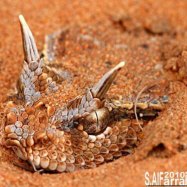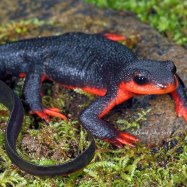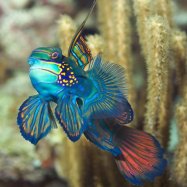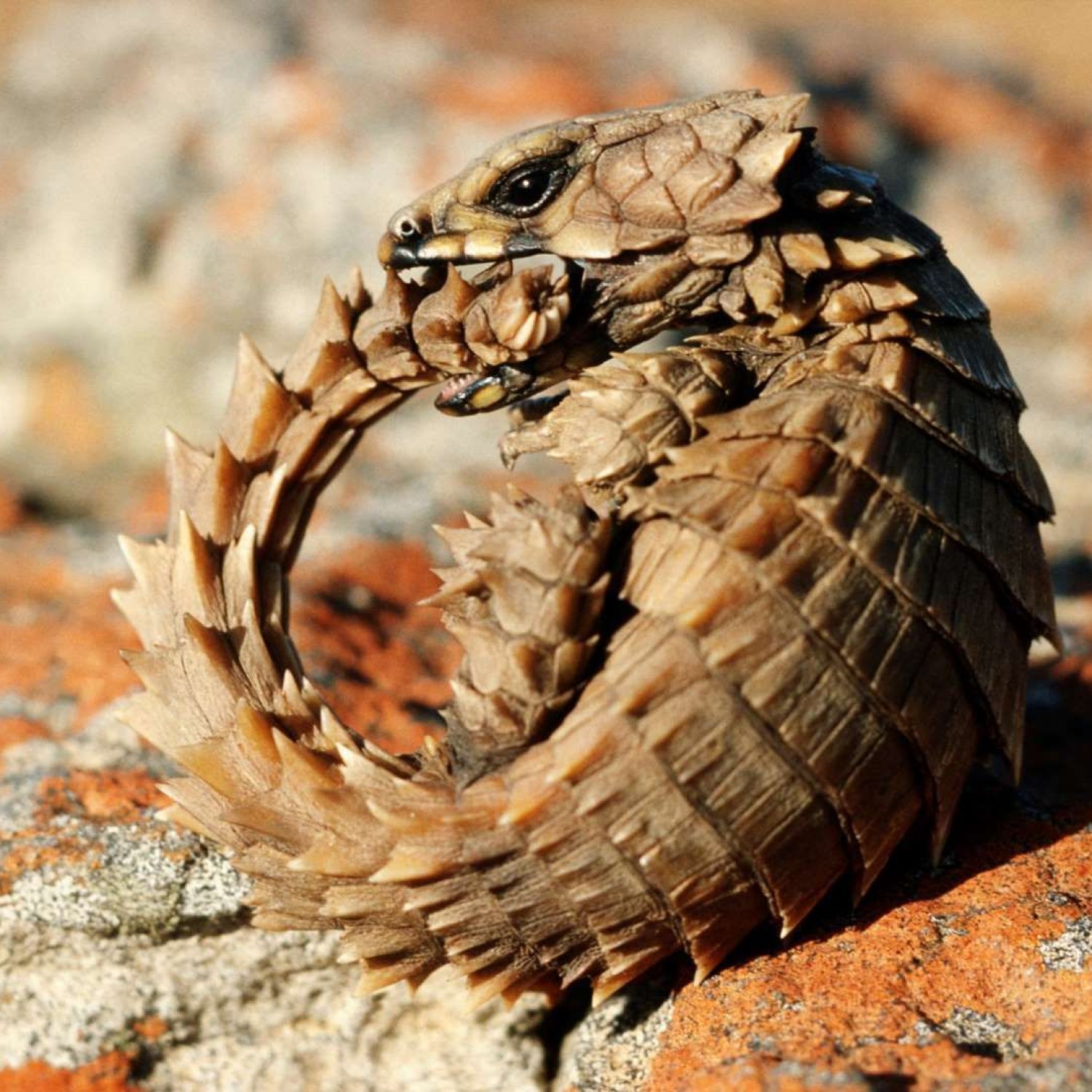
Armadillo Lizard
15-20 centimeters
The Armadillo Lizard, found in Kalahari and Namib Deserts, is a unique animal known for its short and stocky body shape. Measuring 15-20 centimeters, it belongs to the Cordylidae family. Fascinating fact: It can roll into a ball like an armadillo as a defense mechanism against predators. #ArmadilloLizard #DesertAnimals
Animal Details Summary:
Common Name: Armadillo Lizard
Kingdom: Animalia
Habitat: Deserts and scrublands
The Armadillo Lizard: A Fascinating Reptile of the Desert
Have you ever heard of an animal that looks like a cross between an armadillo and a lizard? Meet the Armadillo Lizard, scientifically known as Ouroborus cataphractus, a unique and fascinating creature found in the deserts of Southern Africa.This reptile has captured the curiosity of many with its peculiar appearance, and it is no surprise that it has become a popular exotic pet. But beyond its distinctive looks, the Armadillo Lizard has several amazing features that make it stand out in the animal kingdom. Let's dive deeper into the world of this scaly wonder and discover the secrets behind its armored exterior Armadillo Lizard.
Classification and Habitat
Like all living things, the Armadillo Lizard has a scientific name. Ouroborus cataphractus is derived from the Greek words "ouro" meaning tail and "boros" meaning devouring, representing the lizard's habit of biting its tail when threatened. It is also commonly known as the Armadillo Lizard due to its body shape and armor.Belonging to the Animalia kingdom and Chordata phylum, the Armadillo Lizard is a member of the Reptilia class and Squamata order. Its family, Cordylidae, is where it gets its connection to armadillos and is also home to several other species of lizards. This reptile is found in the deserts and scrublands of Southern Africa, specifically in the Kalahari Desert and the Namib Desert.
Feeding and Adaptations
The Armadillo Lizard is an insectivore, meaning it feeds primarily on insects. Its diet includes ants, termites, beetles, and other small insects found in its habitat. In the wild, these reptiles use their sharp claws and long pointed teeth to dig for insects, which they then capture with their long sticky tongues Agama Lizard.One of the most remarkable features of the Armadillo Lizard is its defense mechanism. To protect itself from predators, it has developed several clever adaptations. Its body is covered with small, bony, and overlapping scales, forming a hard armor that shields it from harm. When threatened, it can roll itself into a tight ball, using its tail to encase its head, limbs, and tail, forming an impenetrable barrier.
Another fascinating adaptation is the Armadillo Lizard's ability to regulate its body temperature. Being cold-blooded, it relies on the environment to maintain its body temperature. In extreme temperatures, it can burrow deep into the sand or hide under rocks to regulate its body temperature and avoid overheating or freezing.
Geographical Distribution and Conservation Status
The Armadillo Lizard is native to Namibia and South Africa, with its main habitats being the Kalahari Desert and the Namib Desert. These areas are characterized by hot and dry weather conditions, with sparse vegetation, making them an ideal environment for this reptile.Unfortunately, the Armadillo Lizard is facing several threats, including habitat loss and fragmentation due to human activities and the introduction of non-native species to its habitat. This has led to a decline in its population, and it is now categorized as Near Threatened on the IUCN Red List of Threatened Species.
Physical Characteristics
The Armadillo Lizard has a unique appearance that sets it apart from other lizards. Its body is short and stocky, with thick legs and a short tail. It can reach a length of 15-20 centimeters, making it a relatively small reptile compared to other lizards.One of the most remarkable features of the Armadillo Lizard is its armored skin. Its back is covered with small, shield-like scales that overlap each other, giving it a spiky and rough appearance. This armor is made of keratin, the same protein that makes up human hair and nails, and helps protect the lizard from predators.
As for its coloration, the Armadillo Lizard is usually grey-brown, with darker markings on its back and tail. This coloration helps it blend in with its surroundings, making it less visible to potential predators.
Behavior and Reproduction
The Armadillo Lizard is a solitary and territorial creature. It spends most of its time hiding in its burrow or hunting for food in its surroundings. It is also a diurnal animal, meaning it is active during the day and sleeps at night.During the breeding season, which occurs from September to December, male Armadillo Lizards will fight over a female by headbutting each other. Once the pair has mated, the female will lay a clutch of three to six eggs, which she will then bury in a warm and sandy area. The eggs take about two months to hatch, and the young lizards are independent from birth.
Why is the Armadillo Lizard Important?
Apart from being an interesting and unique creature, the Armadillo Lizard plays an essential role in its ecosystem. As an insectivore, it helps control insect populations, playing a part in maintaining the balance of its habitat. Additionally, as a threatened species, its survival is crucial in preserving biodiversity and maintaining the health of its ecosystem.Becoming an Armadillo Lizard Owner
If the Armadillo Lizard has piqued your interest, you may be wondering if it is a suitable pet. While it may seem tempting to keep this fascinating creature as a pet, it is crucial to consider the responsibilities that come with owning one.Firstly, Armadillo Lizards are not domesticated animals, so they may not be the best choice for inexperienced reptile owners. They require a specialized diet, specific temperature and humidity levels, and a suitable habitat to thrive. They are also solitary creatures and do not enjoy being handled, so they may not make the best pets for those looking for a companion.
Additionally, it is essential to ensure that the Armadillo Lizard you choose is not caught from the wild, as this can contribute to the decline of its population. It is crucial to purchase from a reputable breeder who has well-cared-for captive-bred lizards.
Conclusion
The Armadillo Lizard, with its armored exterior and unique defense mechanism, is a marvel of nature. Its resilience and adaptations have allowed it to thrive in the harsh conditions of the desert, and it continues to fascinate and intrigue those who come across it.As a species facing threats to its survival, it is essential to raise awareness about the Armadillo Lizard and its importance in its ecosystem. Let us continue to admire this mysterious creature in its natural habitat, and do our part in ensuring its survival for generations to come.

Armadillo Lizard
Animal Details Armadillo Lizard - Scientific Name: Ouroborus cataphractus
- Category: Animals A
- Scientific Name: Ouroborus cataphractus
- Common Name: Armadillo Lizard
- Kingdom: Animalia
- Phylum: Chordata
- Class: Reptilia
- Order: Squamata
- Family: Cordylidae
- Habitat: Deserts and scrublands
- Feeding Method: Insectivorous
- Geographical Distribution: Southern Africa
- Country of Origin: Namibia and South Africa
- Location: Kalahari Desert, Namib Desert
- Animal Coloration: Grey-brown
- Body Shape: Short and stocky
- Length: 15-20 centimeters
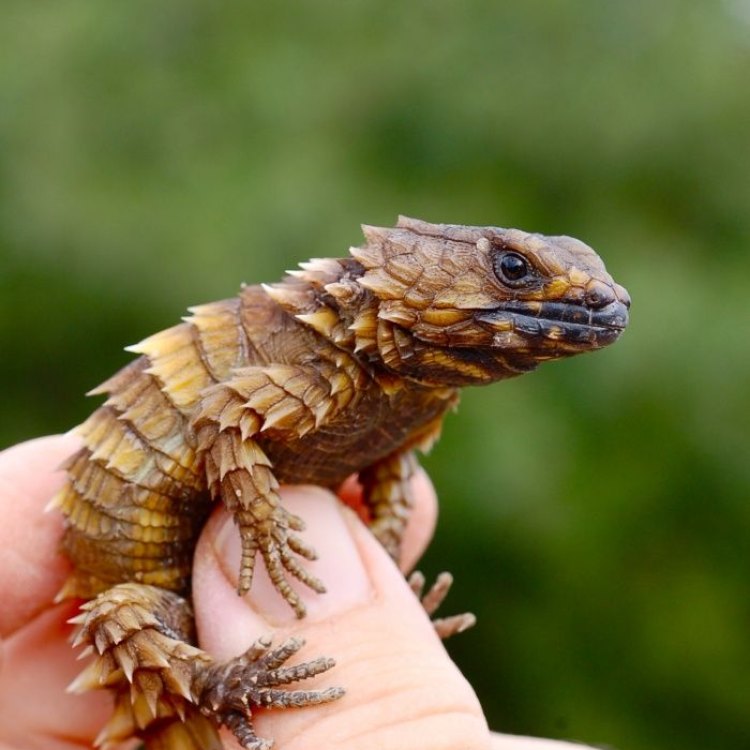
Armadillo Lizard
- Adult Size: Small
- Average Lifespan: 10-15 years
- Reproduction: Oviparous
- Reproductive Behavior: Mating occurs in spring
- Sound or Call: Do not produce any vocal sounds
- Migration Pattern: Non-migratory
- Social Groups: Solitary
- Behavior: Nocturnal and burrowers
- Threats: Habitat loss and collection for pet trade
- Conservation Status: Least Concern
- Impact on Ecosystem: Important for controlling insect populations
- Human Use: Collected for the pet trade
- Distinctive Features: Armored scales and spiky tail
- Interesting Facts: Can roll into a ball when threatened
- Predator: Birds of prey, snakes, and carnivorous mammals
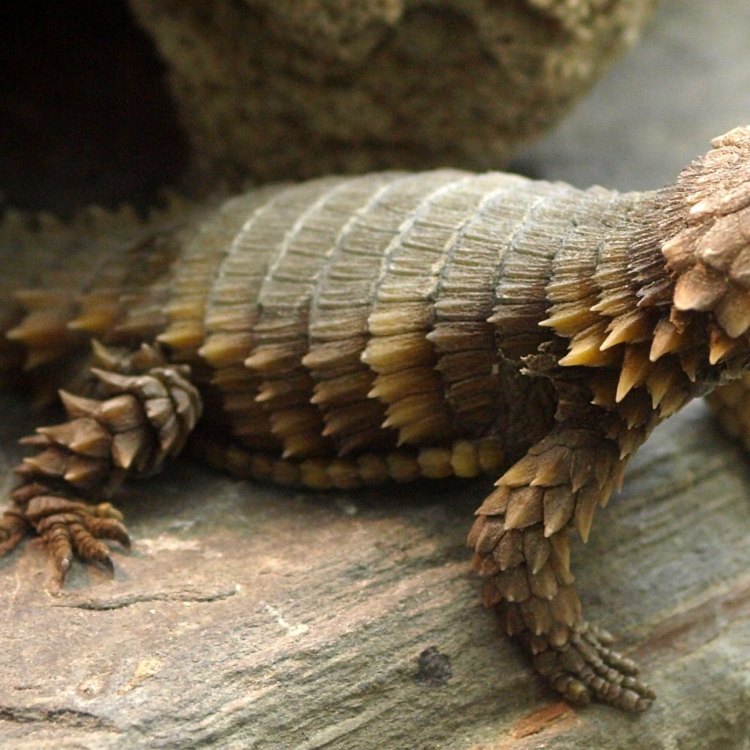
Ouroborus cataphractus
The Armored Defender: The Fascinating World of the Armadillo Lizard
Have you ever heard of a lizard that can roll into a ball like an armadillo? Introducing the Armadillo Lizard, one of the most unique and intriguing species of lizards found in the world. Its armored scales and spiky tail are not the only distinctive features of this reptile; its behavior, reproductive strategies, and impact on the ecosystem make it a fascinating creature to learn about. In this article, we will explore the world of the Armadillo Lizard and discover why it is considered a true armored defender.A Small Yet Mighty Creature
The Armadillo Lizard, also known as the Ouroborus cataphractus, is a small lizard that can grow up to 7 or 8 inches in length, making it one of the smallest known species of lizards PeaceOfAnimals.Com. It is commonly found in the deserts and dry grasslands of southern Africa, particularly in Namibia and South Africa.Although small in size, the Armadillo Lizard has an average lifespan of 10-15 years. This impressive longevity is due to its ability to adapt and thrive in its harsh habitat. However, its survival is not without threats.
Reproduction Strategies That Ensure Survival
The Armadillo Lizard is an oviparous species, meaning it lays eggs to reproduce. Mating occurs in the spring, and females can lay up to 8 eggs at a time. Interestingly, these eggs are not laid in a typical nest, but rather in a burrow that the female digs herself. The mother lizard then covers the eggs with sand, and they are left to hatch and survive on their own.This reproductive strategy is crucial for the survival of the species, as it ensures that the eggs are protected from predators Antarctic Scale Worm. It also allows the female to continue her solitary lifestyle, as she does not need to care for her offspring.
The Life of a Solitary Nocturnal Burrower
The Armadillo Lizard is a solitary creature, meaning it prefers to live and hunt alone. It is also nocturnal, which means it is active at night. These behaviors are a survival tactic, as it allows the lizard to avoid potential predators and compete for resources.In the daytime, the Armadillo Lizard can be found burrowed underground, making use of its strong limbs and claws to dig deep tunnels. These burrows protect the lizard from the harsh desert environments and provide a safe place to rest and lay eggs. Additionally, these burrows are essential for regulating the lizard's body temperature, as they can quickly dig deeper or closer to the surface depending on the weather.
Threats To Its Existence
Despite its resilient nature, the Armadillo Lizard faces threats that endanger its survival. Habitat loss due to urbanization and agriculture is a significant threat to this species. As their preferred habitat is dry grasslands and deserts, the expansion of human settlements has resulted in a decline in their natural habitat.Furthermore, the Armadillo Lizard is also collected for the pet trade, as its unique appearance makes it a sought-after species in the exotic pet market. This practice has significantly affected the wild population of these lizards, and measures need to be taken to regulate and protect their collection for the sake of their survival.
Conservation Status and Ecological Impact
Currently, the Armadillo Lizard is listed as "Least Concern" on the IUCN Red List of Threatened Species. However, as their population continues to decline, they may face a higher risk of extinction in the future.Aside from being a fascinating and unique species, the Armadillo Lizard plays a vital role in its ecosystem. These lizards are important for controlling insect populations in their habitat, as they primarily feed on ants and termites. This regulation of insect populations helps maintain a balanced ecosystem and benefits other animal species in their habitat.
Humans and the Armadillo Lizard
Humans have had a significant impact on the Armadillo Lizard's existence, both positive and negative. As mentioned earlier, the pet trade has negatively impacted their wild population. However, the Armadillo Lizard has also been a part of traditional medicine in some countries, where its scales and fat are used for medicinal purposes.Additionally, the Armadillo Lizard's unique appearance and behavior have also made it a popular species in the field of scientific research. Its ability to roll into a ball, its burrowing behavior, and its armored scales have been studied extensively to better understand the evolutionary adaptations of this species.
The Unique Features of the Armadillo Lizard
The Armadillo Lizard's most distinctive feature is, of course, its armored scales. These scales not only protect the lizard from predators, but they also give it its characteristic look. Its back and sides are covered in these scales, while its belly remains smooth and unarmored.Another unique feature of the Armadillo Lizard is its spiky tail. This tail is used for protection, as the lizard can roll into a ball and present its spiky tail as a defense mechanism when threatened by predators. The spiky tail, coupled with its armored scales, makes the Armadillo Lizard a formidable opponent for any potential threat.
Fun Facts and Predators
Apart from its defensive abilities, the Armadillo Lizard has some other fun and interesting facts. For example, they have a low tolerance for heat and are known to bury themselves in the sand to cool down. They are also known to hiss when threatened, which, combined with their appearance, can scare off potential predators.Speaking of predators, birds of prey, snakes, and carnivorous mammals are the main predators of the Armadillo Lizard. These predators pose a significant threat to their survival, and the lizard's defensive tactics mentioned earlier are crucial for their survival.
In Conclusion
The Armadillo Lizard is indeed a unique and fascinating creature. Its distinctive features, reproductive strategies, and behavior make it a true armored defender in the harsh environments it inhabits. Although facing threats to its existence, the Armadillo Lizard continues to thrive and play an important role in its ecosystem. As humans, it is our responsibility to ensure the survival of this species by protecting its natural habitats and regulating the collection for the pet trade. Let's appreciate and learn more about this incredible creature, the Armadillo Lizard.
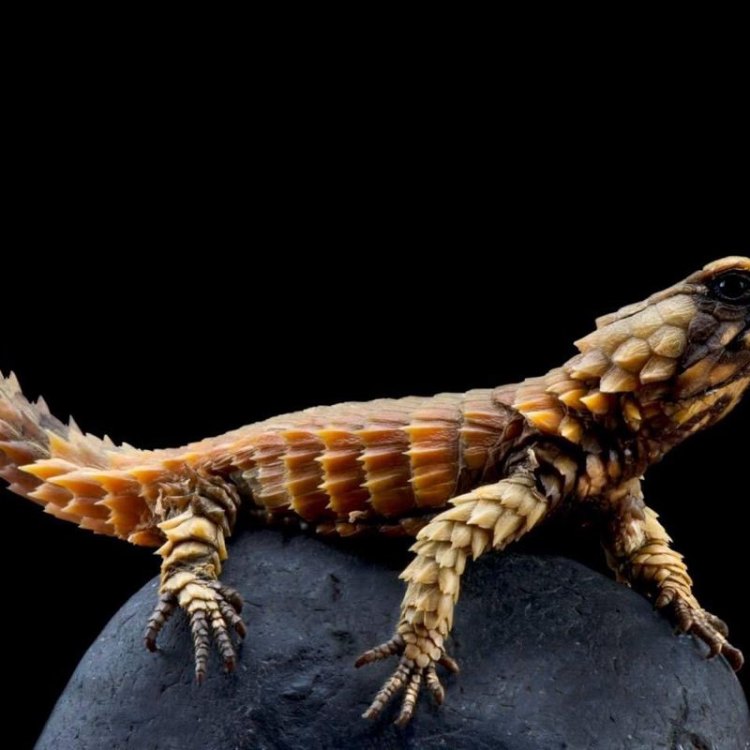
The Armadillo Lizard: A Fascinating Reptile of the Desert
Disclaimer: The content provided is for informational purposes only. We cannot guarantee the accuracy of the information on this page 100%. All information provided here may change without prior notice.


